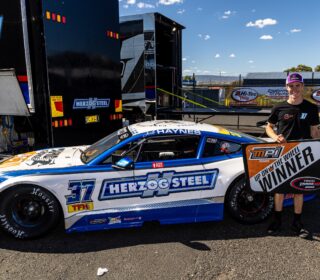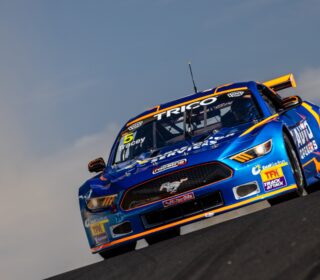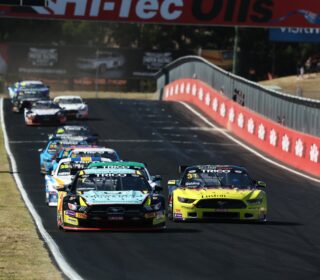THE CARS ‘STORMIN NORMAN’ MADE GREAT
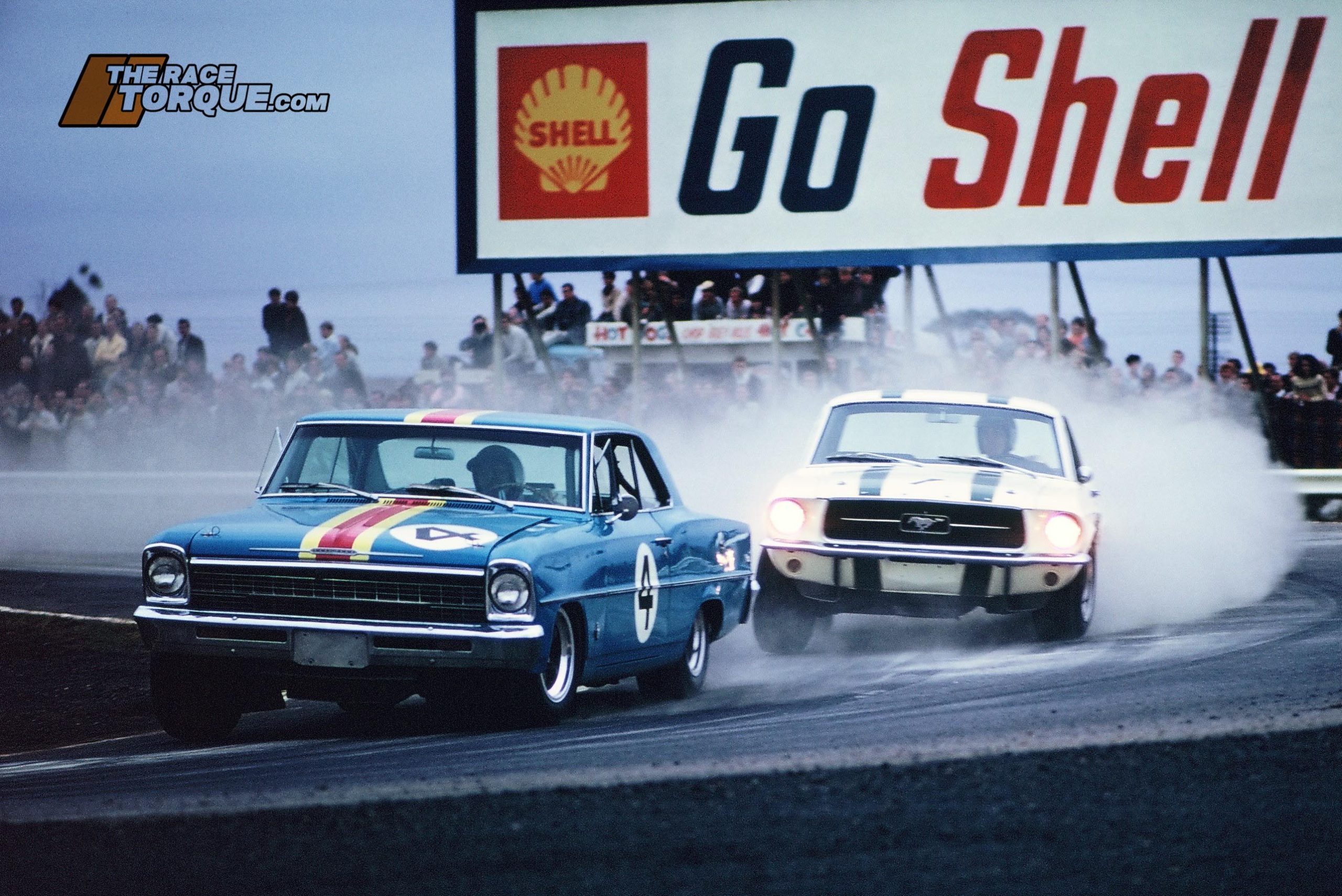
It is just on fifty years since Norm Beechey won the second round of the 1970 Australian Touring Car Championship at Bathurst in his game changing Holden Monaro GTS 350. Beechey went on to win the title that year – in doing so giving Holden their first series win and making the Monaro the first Australian car to win the ATCC.
The Race Torque’s Dale Rodgers spoke with the Touring Car legend, who provided insights into the unique cars that became iconic in the lead up to his memorable 1970 Championship.
WORDS: Dale Rodgers
LEAD IMAGE: Norm Beechey taking on Ian ‘Pete’ Geoghegan at Calder Park in 1968 – thanks to SS Auto Memorabilia.
IMAGES: As credited
‘GREAT DAYS’ is a line Norm Beechey often adds to his signature when asked to sign various pictures and books from his racing career. Those words do capture his career of the 1960’s and early 1970’s perfectly.
We often romance about heroes in motor sport. Larger than life personalities. Showmen. Entertainers. All of these attributes explain why Norm Beechey was, without question, one of the greatest Touring Car competitors this county has ever seen.
Not only was the character himself one of the most popular drivers of the era, he went further by putting cars on the grid between 1965 and 1970 that were unique and won him even more fans.
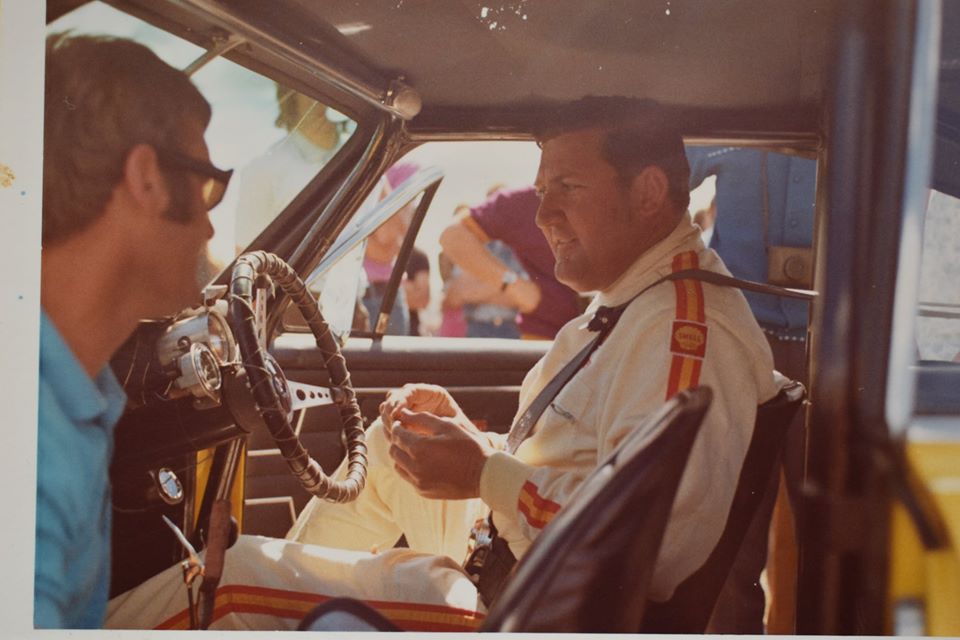
IMAGE: Greg Feltham
Beechey competed in a wide variety of cars from as far back as the as the Albert Park meeting that was held in conjunction with the Olympic Games in 1956. He raced a new Ford Customline that won the main Touring Car Race, beating Len Lukey in the procerss. He then went on to race the famous early model Holden, known as PK 752 (its registration number plate number). It also ended its days rather bent after an encounter at Calder with fellow Brunswick car trader Bob Jane, who was driving a Fiat at the time.
But it was 1965 that arguably changed the landscape of Touring Car Racing and almost certainly began the love affair with V8’s as the staple diet of racing in Australia. Norm won the Australian Touring Car Championship that year when he imported a brand-new Ford Mustang. The cars were hard to get during their launch year on the USA market but, in inimitable Beechey style, he was soon in the USA jumping the queue thanks to a chance restaurant meeting in Melbourne with Bill Bourke, head of Ford Australia, who wrote Norm a letter of introduction to Ford USA.
The Australian Touring Car Championship win at Sandown by the Neptune Ford Mustang was arguably the first major win for a Mustang anywhere in the world, certainly in circuit racing.
After the Mustang won the 1965 ATCC by over a lap, it was the car of choice. Bob Jane continued with his hastily arrived Mustang in 1966 and was joined by Pete Geoghegan in the Touring Car ranks.
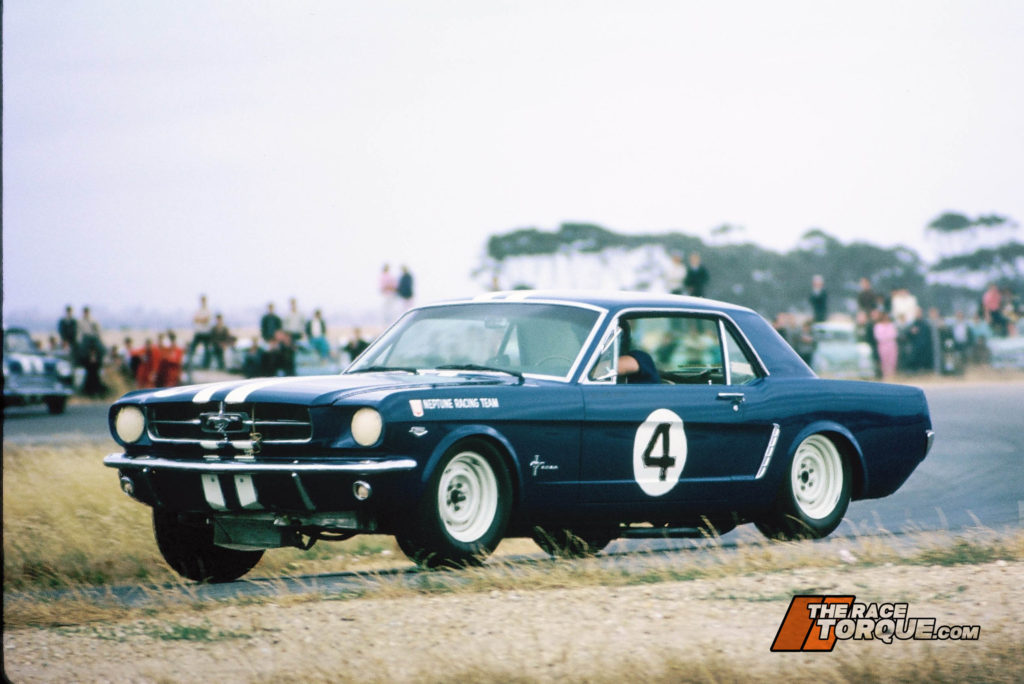
IMAGE: SS Auto Memorabilia
With a pioneer attitude, Beechey was once again off to the USA to look for a Mustang replacement, even though the Mustang he had only been developed over a short period after its Championship win.
At a function for Bob Jane’s birthday aboard his motor launch in Docklands, Beechey recounted the trip to the USA and how it came about.
Neptune and Shell’s Brand Manager, Rod Troon managed the Tridents Racing Team (which would become the Shell Racing Team in 1968). The line-up covered each class of racing in the Improved Production era: Beechey in the Over 3000cc class along with teammates Jim McKeown, and his super quick Lotus Cortina, and the ubiquitous Peter Manton, ‘king’ of the Mini brigade.
Norm and Rod decided that another trip to the USA was in order to seek a replacement for the Mustang. He returned in early 1966 with a two door, 5.3 litre Chevrolet Nova 11. A superb looking USA Muscle Car, which, just as Beechey had done with the Mustang, would be the Nova’s first circuit racing campaign.
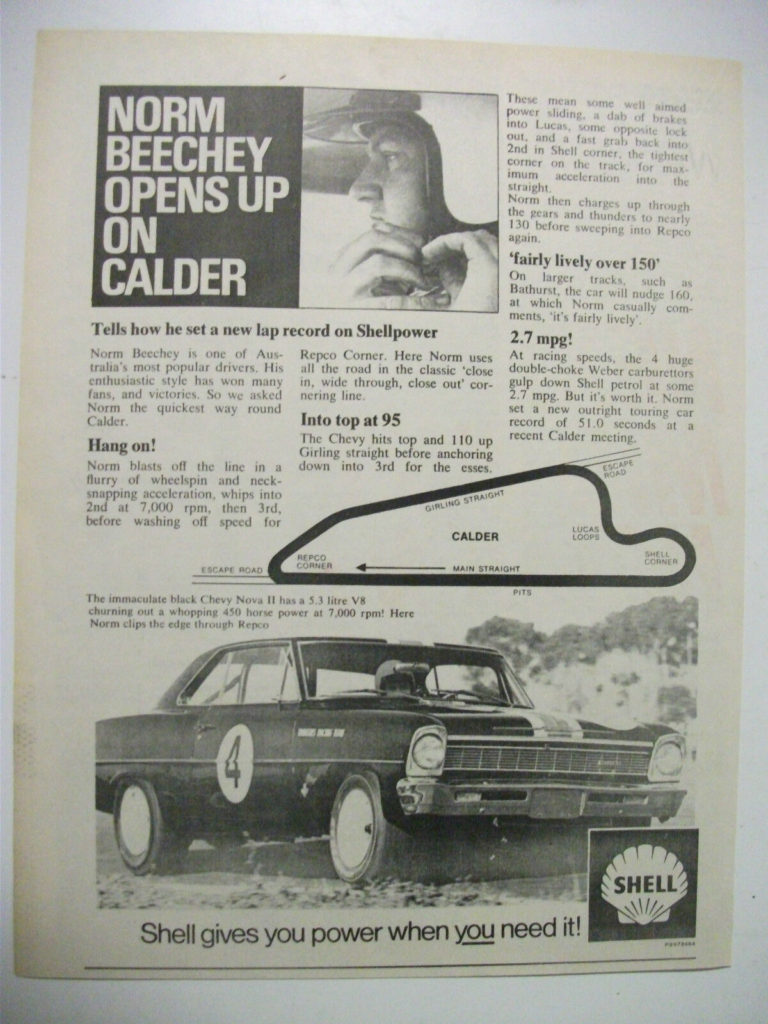
Beechey paid USD $2,600 for the Nova from a Californian dealer before spending another $6,000 at Traco Engineering for a race ready version of the 327ci Chevrolet engine. The Nova was an instant success and the battle lines between Norm and Ian ‘Pete’ Geoghegan were drawn in early 1966 and continued right through until Beechey’s retirement in 1972.
Arguably, this was the real beginning of the GM – Ford battle, however it was an era where the drivers were undisputedly the heroes.
Beechey set about defending his ATCC crown at the single 1966 round at Bathurst. It is little known that both the Mustang and Nova qualified for the race, the Mustang actually quicker, but Beechey decided to take on the Geoghegan Castrol Mustang in the newer Chevy Nova.
Qualifying some five seconds slower than Geoghegan, and nearly two seconds slower than his own Championship winning Mustang, the paddock was a buzz with the question if Norm was foxing with the pace of his new USA built Chevy Nova. Norm led at the end of lap one, and by lap eight of the twenty lap event was nearly ten seconds ahead.
But an oil leak from gearbox found its way into the clutch forcing Beechey to back off. He then saw Geoghegan pass him and take the win by over thirty seconds.
“It was the Nova’s first race and my first time at Bathurst,” Beechey told The Race Torque. “I treated that track with a lot of respect.
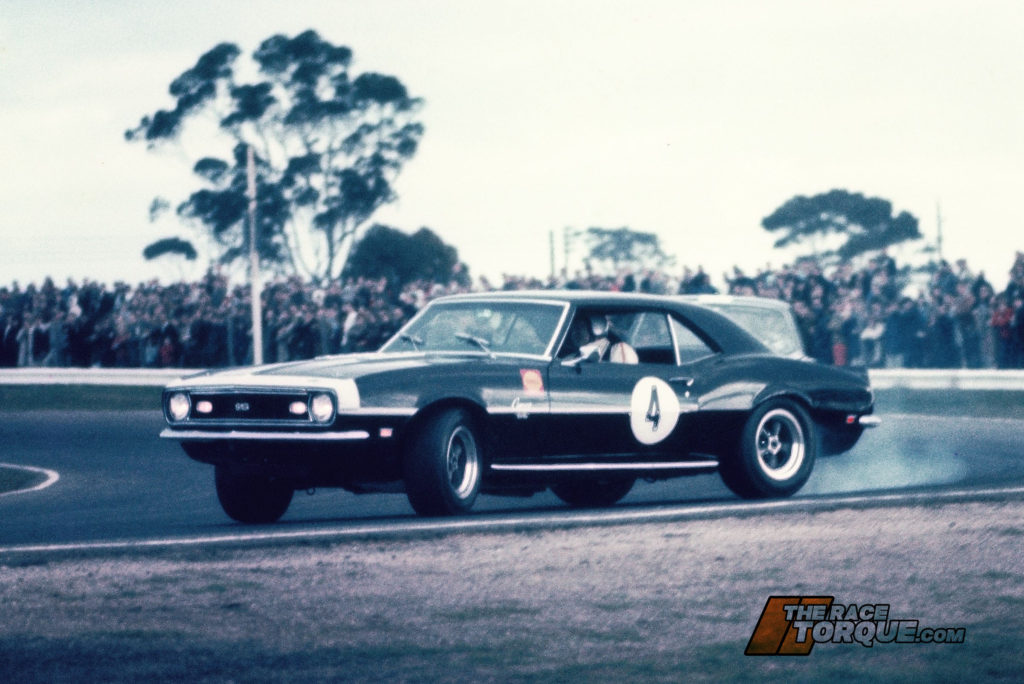
IMAGE: SS Auto Memorabilia
“The Chevy Nova went straight by Geoghegan up the Mountain Straight in the race, and I was leading comfortably. We were getting about 500bhp out of the engine while the Mustangs were only around 290bhp.”
‘Stormin Norman’, as the fans now called him, stuck with the Nova into the 1967 season and again faced his biggest rival ‘Pete’ Geoghegan in the showdown for the ATCC at Lakeside. The Nova had raced extensively during 1966 and ‘67 and was becoming a well sorted race car, but Big Pete always seemed to have something in his repertoire to take it up to Beechey.
Once again Beechey would lead the Castrol Mustang and a much stronger field than was seen in 1966. Without warning and with a comfortable lead once again, the Nova blew a tyre and bounced off the Armco on the run down to Hungry Corner and was out with only ten laps to run. Ever the showman, Beechey sat on the bonnet of the stricken black Nova and watched another ATCC slip away.
In 1968, Beechey was again in the USA to find a replacement for the Nova. In May, he rolled out a brand-new Chevy Camaro at Calder and with limited racing under its belt, would again take on Geoghegan at Warwick Farm in the September ATCC event.
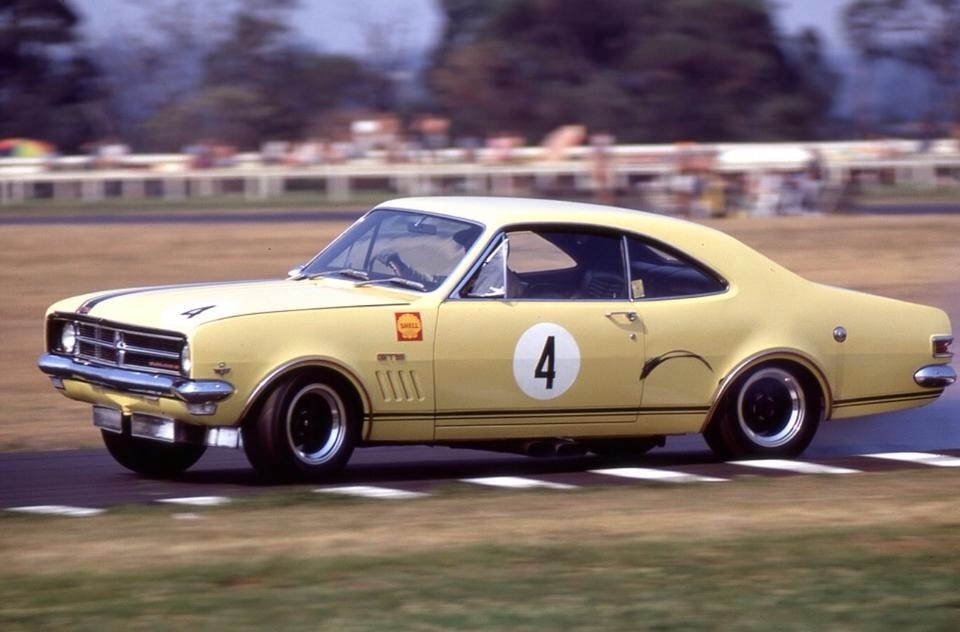
IMAGE: Archives
This time he would trail ‘Pete’s’ Mustang and retire after only 12 laps. Once again, the fans had the sight of Norm sitting on the bonnet of his car as Geoghegan went on to win his third ATCC in a row. The Camaro was a very short-lived affair and just a few months later prior to the end of 1968, Norm would debut a new HK Holden Monaro.
Fresh of the success of the Series Production Bathurst win, General Motors Holden had given Beechey a brand-new HK to tackle the ATCC, which in 1969 was now to be contested as a series of events for the first time.
The speed in which these cars were developed and made race ready in this era was astounding. The HK Monaro arrived at Norm’s Brunswick workshops late in 1968 and while still campaigning the Camaro, his small crew led by Graham Moore had the car race ready for the ‘69 Championship.
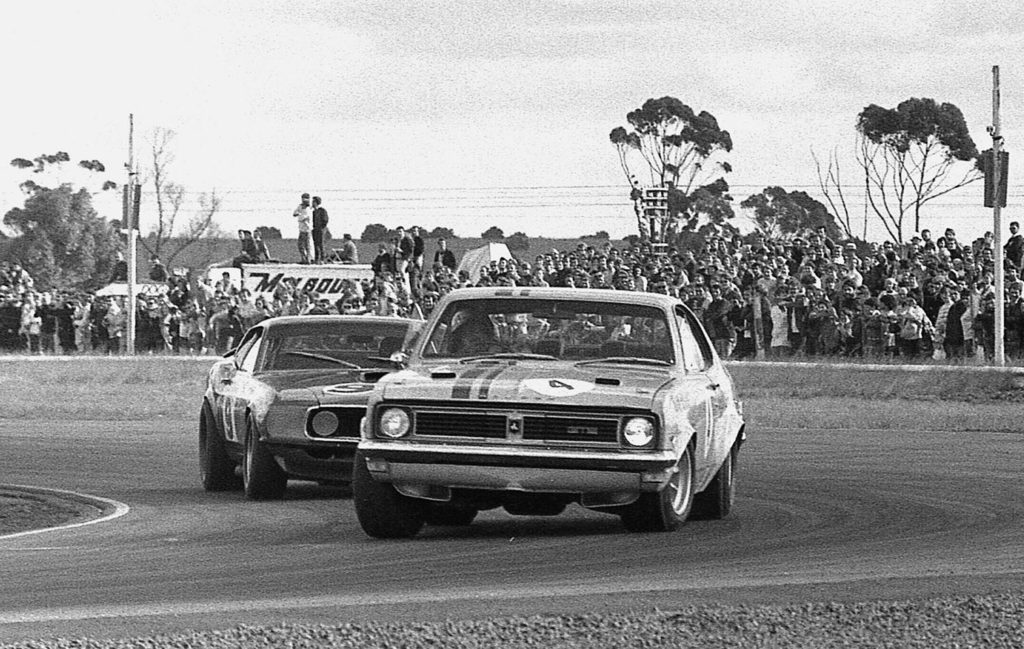
IMAGE: Robert Davies
A DNS at Bathurst in round 2, after clouting the fence at Forest Elbow, may well have cost him the 1969 Championship but the new Monaro finished strongly with wins at Surfers Paradise and Symmons Plains. Ironically, the ATCC was again handed to Geoghegan’s Mustang.
The rivalry with ‘Pete’ Geoghegan was one of the greatest in Touring Car History in Australia and Beechey still speaks fondly of it.
“I don’t think Ian Geoghegan ever beat me at Calder, and I could not beat him at Warwick Farm. He was brilliant there. But at Lakeside we both won a lot of races,” Norm recalled.
“Racing Geoghegan was always tough but very fair. There was a lot of respect between us,”
Beechey was not quite as complimentary to the likes of Bob Jane and Alan Moffat as he was to Geoghegan!
It was 1970 that saw Beechey launch the car that would be defining not only in his own career but lives in the annals of one of the greatest Touring Cars the country has ever seen.
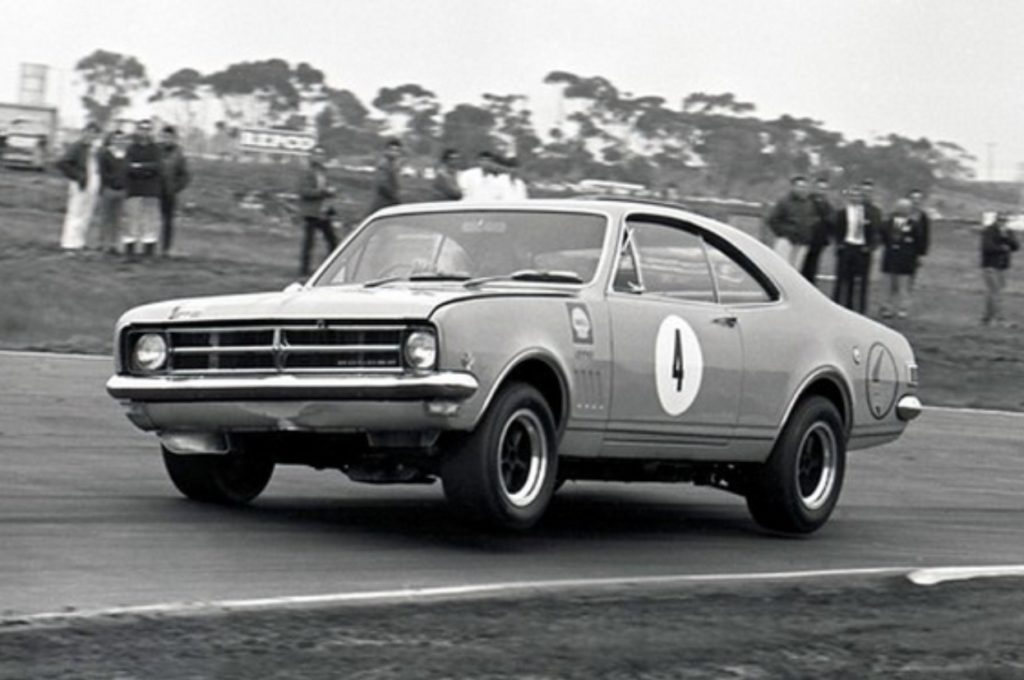
IMAGE: Archives
For the fifth time in five years, Shell’s main man would launch another assault in a new car. The HT Holden Monaro was unlike any other Touring Car built in Australia: Innovative and borrowing much from the factory built Trans Am cars, the Beechey Monaro would be the first locally produced car to ever win the ATCC.
Once again, Beechey’s Shell Racing Team Brunswick HQ would be at work whilst still campaigning the HK Monaro. The HT Monaro GTS 350 debuted at Beechey’s home track at Calder. His adoring fans were lined up in their thousands to watch not only the resumption of the Beechey / Geoghegan battle but a host of serious contenders now entering the Championship: Allan Moffat in the full spec 1969 Trans Am Mustang, Bob Jane in a matching car to Geogehgan’s 68 Mustang GTA and serious Porsche additions. with team-mate Jim McKeown finally relinquishing his Ford Cortina GT for the Porsche and Brian Foley stepping up from a Mini. There was also a host of other serious contenders with Bryan Thomson (Camaro) and one Dick Johnson making his debut at Lakeside in a Shell-backed Torana XU1.
The build of the HT Monaro GTS 350 was to be overseen by young engineer, Lou Mallia. He had commenced with Beechey’s Truck Dealership in the Chevy Nova era and progressed to race team duties after Graham Moore stepped down and John Sheppard left after a short stint. Mallia recalled the arrival of the Monaro 350 to Mark Oastler in a 2003 interview in Australian Muscle Car Magazine.
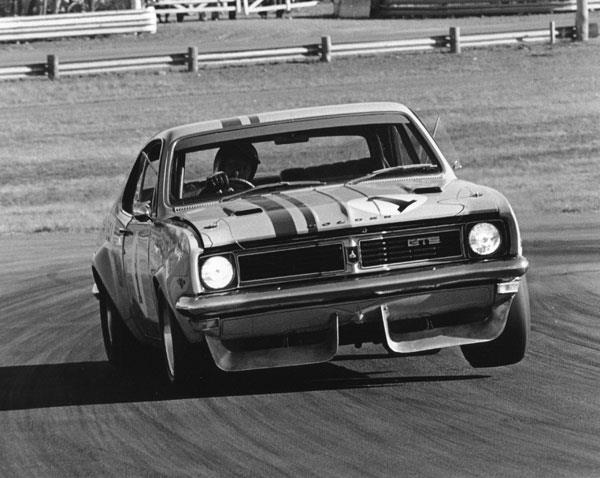
“The car arrived at work (a workshop at the rear of Beechey’s Nissan Dealership on Sydney Rd in Brunswick) as a brand new, road going car that we completely stripped and built into a race car,” he said. “Norm was really 99% of that motor car. He was a very, very clever man. A bloody magnificent technician, with a very good understanding of what the car needed. He had most of the say. Take a simple thing like the seat. I reckon we spent a week just getting him comfortable in the car. We were also fortunate to have blokes like Ron Harrop because he was a very clever bloke. Ken Box was also involved and he was a brilliant engineer.”
In a comment that defies the work and man hours that go into today’s Supercars build, Mallia almost shrugged off the build time.
“It didn’t take very long because the HK 327 was phased out at the end of 1969 and we started the ‘70 season with the new car, so we built it over the Christmas – New Year period.”
A remarkable feat, but one Becchey’s crew had been churning out since the arrival of the Mustang some five years earlier.
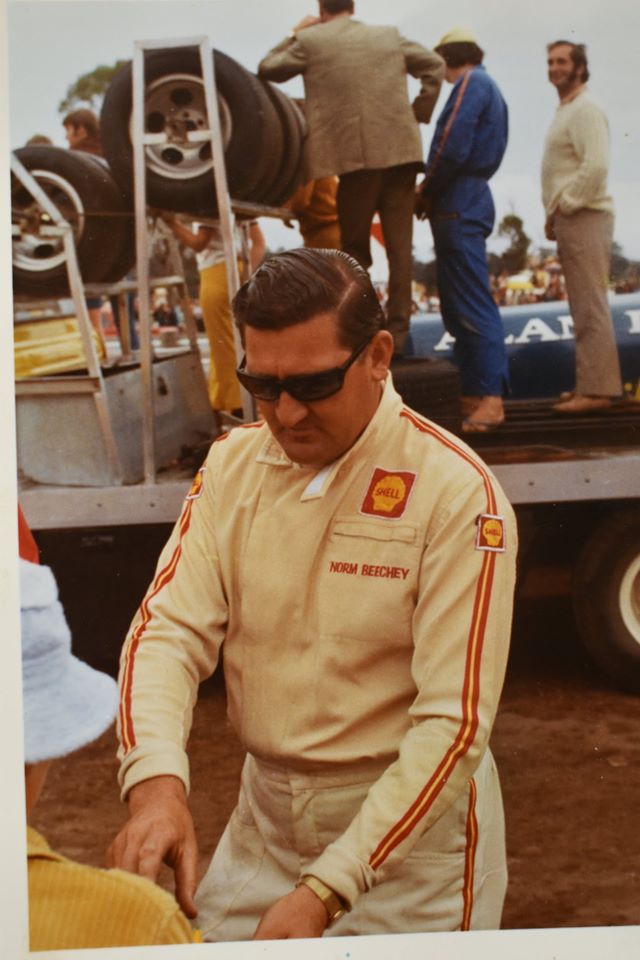
The 1970 ATCC was all about Beechey and the fabulous HT Monaro GTS 350. Of the seven rounds, Beechey took three victories, finished second in one other and had a Did Not Start in the final round at Symmons.
The Monaro took its first ATCC win at Round 2 at Bathurst and then went on to win in front of huge crowd at Melbourne’s Sandown Park Raceway. A win in the penultimate round at Lakeside sealed the Championship for Beechey, his second in six years.
Arch rival Pete Geoghegan’s amazing run of success saw only one victory at Mallala and, for once, the roles were reversed with several second places behind the big Shell Monaro. Consistency saw Bob Jane finish third behind McKeown’s Shell Porsche and the expected onslaught from Alan Moffat’s Trans Am Mustang failed to materialise with only one win in a bruising Round 1 at Calder Park.
Beechey had the last word in an interview in Sports Car World in 1970.
“The Holden project was immense,” Beechey said.
“Somebody claimed in print it cost us a six-figure sum to develop the car. Well, it wasn’t that high. We could have run a team of cars for that amount. But it did take up a hell of a lot of time and money.”
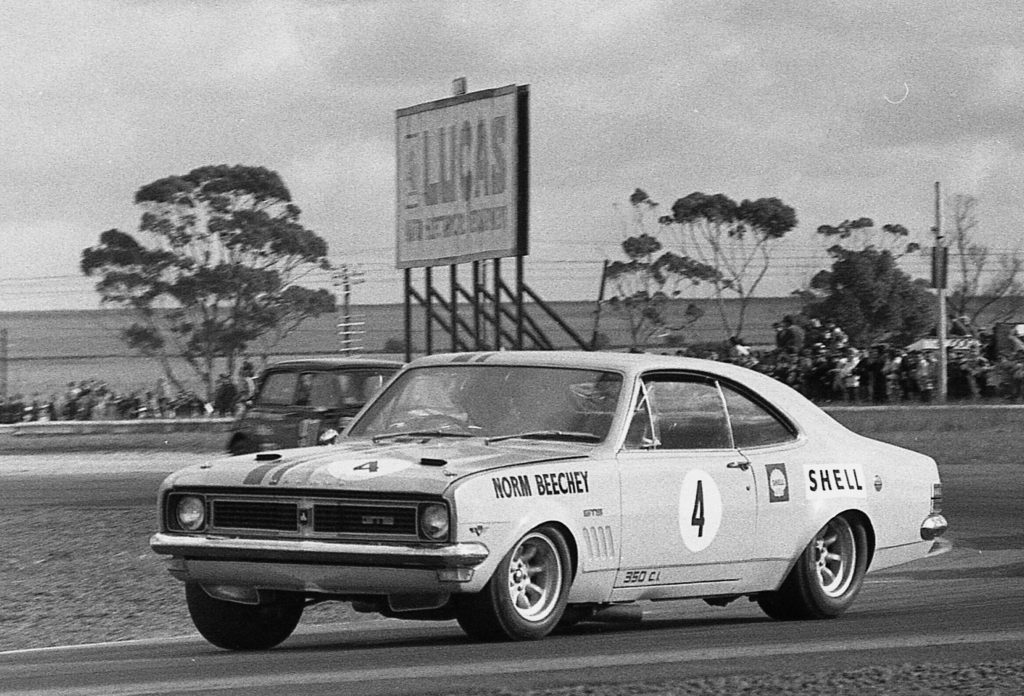
The importance of the HT Monaro GTS 350 and its success were also not lost on Norm.
“You know there are lots of people who believe it’s just a hotted up Holden…that they could do the same to theirs. Well they couldn’t. It’s a 100% racing car and we have achieved it all here in Australia in one season, with a budget only a fraction the size the Yanks had to play with. It’s a magnificent effort, my greatest motor racing achievement.” Norm concluded.
Great Days indeed!
*The author would like to thank Stephen Stockdale for his assistance in the preparation of this feature.



